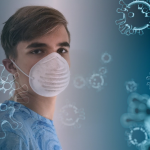In Part I, I presented a precis of the methodology the authors of Nature’s Earth System Boundaries had for the “… multiple levels of likelihoods to reflect underlying scientific uncertainties and variabilities.” As their findings “are meant as a transparent proposal for further debate” let’s now consider and debate the more contentious methodology underlying their proposed action – justice.
Harm Reduction
“Humans are taking colossal risks with the future of civilization and everything that lives on Earth.” So begins a report in Nature attempting to quantify Safe and Just Earth boundaries. The findings “are meant as a transparent proposal for further debate and refinement by scholars and wider society.” I took them at their word; let’s consider and then debate their proposals.
When we turn on the tap, we all expect clean and safe drinking water. Threats to the cybersecurity of public drinking water systems are critical, but often overlooked, issues facing our country. The EPA is faced with the challenge of how to regulate these emerging threats.
The Sixth Amendment states, "In all criminal prosecutions, the accused shall enjoy the right to a speedy and public trial….” In 2019, felony charges required a median of 424 days “to reach some final resolution.” Fourteen months in pretrial custody is not speedy. Bail “reform” seeks to end cash bail for certain crimes in the hopes of reducing pretrial jail populations. A new study tries to get past the sound bites of the media.
The EPA’s Integrated Risk Information System (IRIS) was founded in 1985 to assure scientific integrity and present intra-Agency consensus on health effects information on environmental chemicals. It is an excellent example of how a government agency can misuse a well-intentioned idea to meet a political agenda resulting in flawed public policy decisions with significant implications.
From an evolutionary view, becoming alarmed over dangerous situations is adaptive. Our fight-or-flee response has been honed over the millennium. Now, our prompt and focused attention on alarming information has been used by media – old, main, or social – to capture our eyes and ears (and wallets). What might science tell us about our increasingly alarming media diets? For that, let's first turn to hospitals.
A new study took as its premise, “Many cancer survivors prefer clinicians who understand or share their culture,” and evaluated how often cancer survivors delayed care based on their income and race. Let’s consider what was found.
Once a medical device is brought to market, FDA surveillance of its safety continues. “To facilitate incremental improvements in safety and effectiveness, the FDA allows manufacturers to modify previously approved devices.” Only a few of those modifications require additional clinical testing. How often are those modified devices recalled? Is there cause for concern?
“Beef,” a new Netflix series, explores “two strangers whose lives collide after they incense each other during an incident of road rage.” Maybe those long-promised self-driving cars will help us become more polite, and road rage will be of only historical interest. A new study looks at when our rage surfaces behind the wheel.
A bill recently introduced in the California State Assembly would prohibit five chemicals: brominated vegetable oil, potassium bromate, polyparaben, red dye #3, and titanium dioxide – all banned in Europe – from food products in California. Let’s dig past the headline.
That's a good question. Masks remain one of the non-pharmaceutical means of controlling the spread of infection. But how effective has COVID masking been in practice?
With much fanfare, the EPA announced the proposed drinking water regulations for two “forever chemicals,” PFOA and PFOS. EPA Administrator Michael Regan said, “Communities across the country have suffered far too long from the ever-present threat of PFAS pollution. That is why President Biden launched a whole-of-government approach to aggressively confront these harmful chemicals, and EPA is leading the way forward.”











